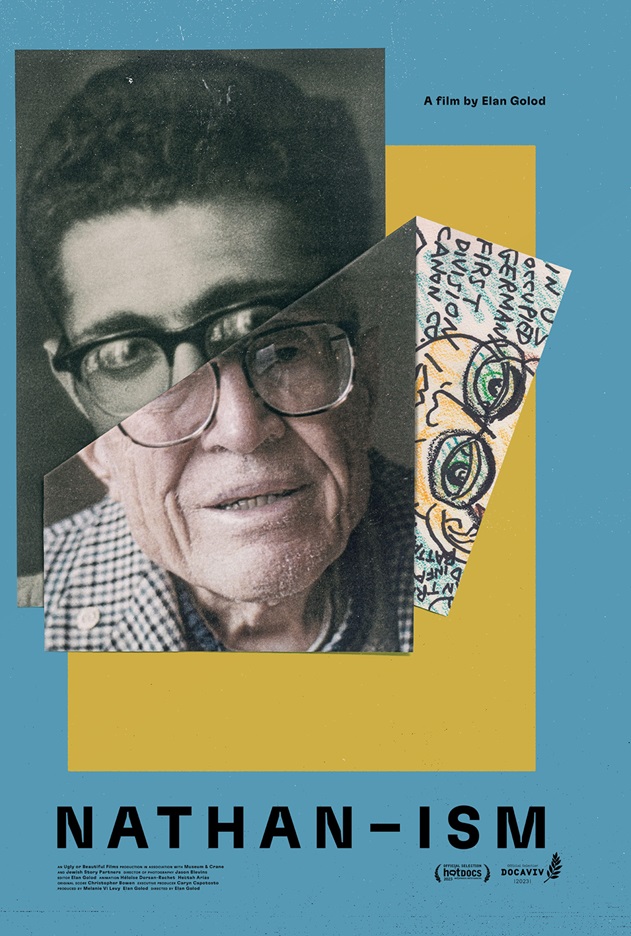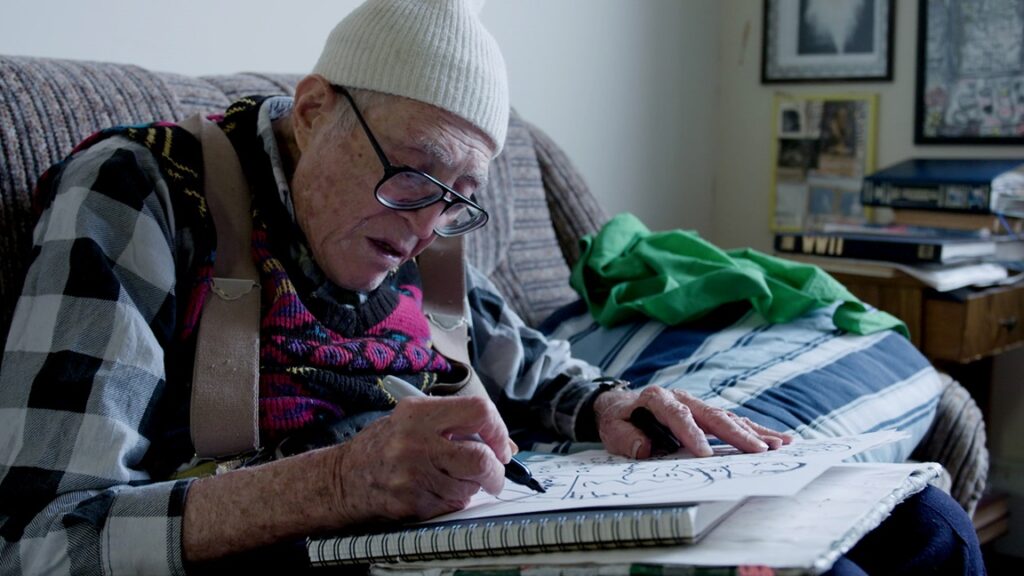
People develop coping mechanisms when they experience something that can’t be easily processed. It’s often something internal that doesn’t get shown to others, but it can also be presented in a way that might not initially – or ever – make sense to those who perceive it. In the case of Nathan Hilu, who, at nineteen years old, was assigned to guard Nazis awaiting trial in Nuremberg, he chose to develop his own art form to communicate to the world what he heard and saw. Nathan-ism takes a compelling look at the man behind the pen.
Filmmaker Elan Golod speaks regularly with Hilu, who, prior to his death in 2019, was living in New York well into his nineties. His experiences more than half a century earlier were key to the identity he developed, and he fashioned a style that he describes as Nathan-ism, his own way of engaging with something that, at such a young age, was difficult to fully comprehend, and remains so to this day. His art is simplistic and childlike, but reveals depths about what he came to understand during his time with war criminals being forced to account for their actions.

Golod takes a direct approach to this story, interviewing Hilu, who is more than happy to talk, frequently, but also pushing him when the opportunity feels right. There are pieces of his history that don’t fully add up, and because he never achieved a tremendous amount of fame, it’s not easily possible to research his past. Yet Golod, who makes his feature directorial debut after considerable work as a film editor, including on a past DOC NYC entry, ’Til Kingdom Come, does his best to glean as much information as he can, unwilling to simply take his subject’s word for everything but eager to dig deeper.
Golod’s interest in getting the full picture of Hilu’s life isn’t meant to question the sincerity or authenticity of his inspiration. It instead seeks to investigate the power of memory, and the way in which images take on a meaning that can be nearly as potent as having actually been somewhere and lived through something. That’s a good way to describe Hilu’s art, which doesn’t necessarily look sophisticated yet communicates a great deal of pain, anguish, and complexity. It’s reminiscent of Maus, Art Spiegelman’s graphic novel depicting the Holocaust through the lens of animals. Such content isn’t just meant for children but provides a more accessible way for some to learn about critical history that should never be forgotten.

Audiences will certainly want to learn as much as possible about Hilu, who passed away four years ago, and may not find all the answers they are looking for in this film. Hilu is happy to talk about things that he finds relevant but not always an open book, and his artwork provides far more insight into the person that he was. It also offers a pathway into a different time, when the Holocaust was not merely a horrific part of history but instead something for which its living perpetrators had to answer and be judged by a court.
There is an intimacy found in Nathan-ism that assures audiences that, were they to have approached Hilu with a similar curiosity and genuine interest to Golod’s, they would have likely been greeted in the same manner. Hilu is an entirely worthwhile subject, and while a film that runs just seventy-nine minutes can’t possibly hope to capture his entire essence, this one comes as close as possible, offering an endearing complement to the work he left behind to offer a peek into his life and how he chose to interpret and share it with the world.
Grade: B+
Check out more of Abe Friedtanzer’s articles.
Nathan-ism is streaming online via DOC NYC through November 26th

